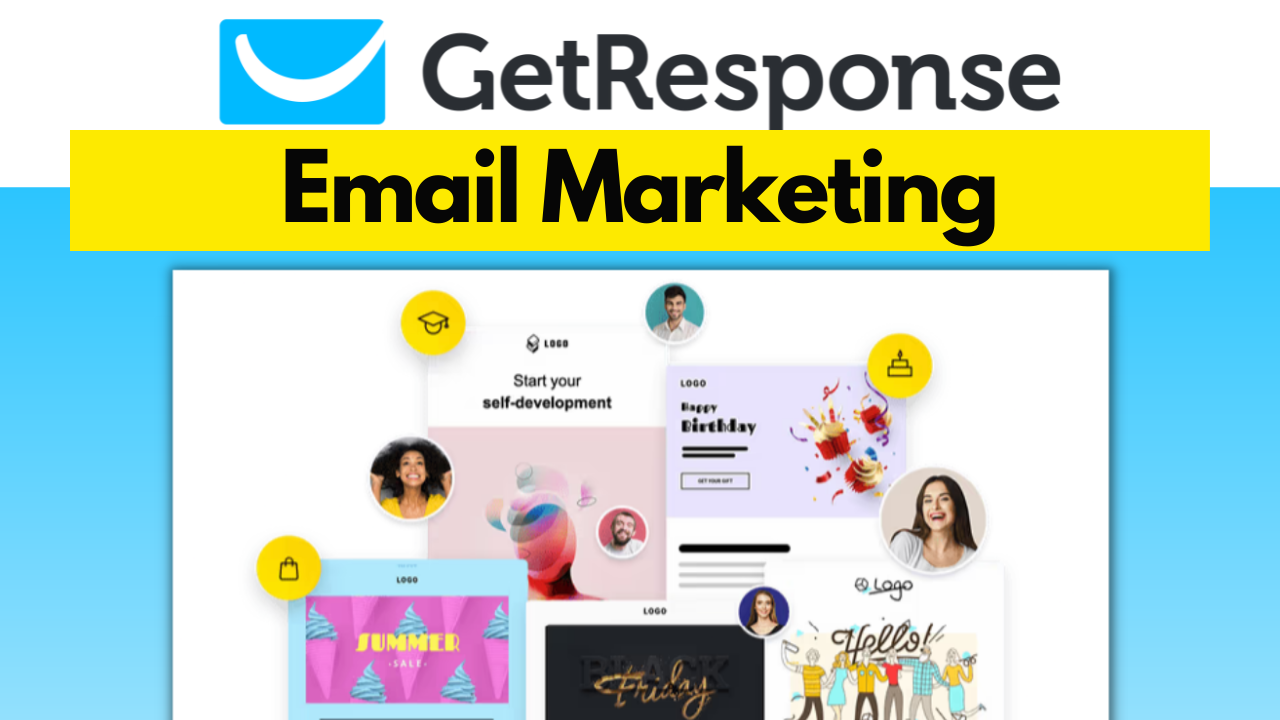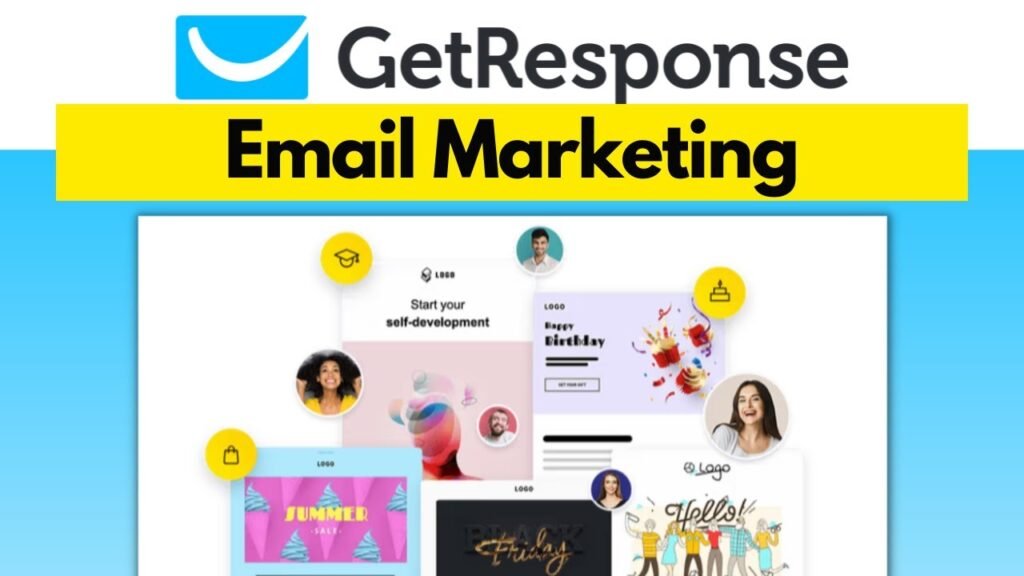
In the rapidly evolving landscape of digital marketing, the GetResponse Email Marketing Tutorial by Boss Mode Marketing serves as an indispensable resource for those embarking on their email marketing journey. Your facile transition from novice to adept email marketer is the focal point of this comprehensive guide. It provides a foundational understanding of GetResponse’s suite of tools, including the creation of targeted emails, websites, landing pages, and autoresponders. The tutorial is tailored to ease you into the platform with a 30-day free trial sans the requirement of a credit card, followed by affordable paid plans starting at a modest $13.30 per month.
As you progress through the steps outlined, you will find yourself harnessing the intuitive drag-and-drop builder to seamlessly craft emails inclusive of text, images, and calls to action. Customization extends to altering email backgrounds, thus ensuring your communications resonate with the desired visual appeal while also enabling response tracking to gauge their efficacy. Beyond aesthetics, the embedded tracking code offers an analytical edge by shedding light on your website’s visitor activity. With Boss Mode Marketing’s guidance, your proficiency in each facet of GetResponse will ensure your email campaigns are not only created with finesse but also optimized for maximum engagement and conversion.

Understanding GetResponse Email Marketing
Overview of GetResponse services
GetResponse is a comprehensive email marketing tool that offers a suite of services to enhance your digital marketing campaigns. As a user, you have access to features like targeted emails, websites, landing pages, autoresponders, and more. The platform is particularly useful for beginners, as it simplifies complex tasks into user-friendly interfaces and workflows.
Comparing free and paid plans
When you sign up for GetResponse, you can choose between free and paid plans. The free plan is an excellent way to get acquainted with the service, offering a 30-day trial period with no credit card requirements. However, should your marketing needs grow, paid plans start at $13.30/month and offer advanced features and capabilities that may be crucial for scaling your efforts.
Navigating the GetResponse dashboard
Upon logging into your GetResponse account, you’ll find the dashboard. This centralizes all the tools and features you’ll need. From here, you can quickly navigate to create or manage contact lists, construct newsletters, set up autoresponders, and analyze the performance of your campaigns. It’s designed to be intuitive, ensuring you can find what you need with ease.
Setting Up Your GetResponse Account
Signing up for free trial
You can begin your email marketing journey by registering for a free trial with GetResponse. This process is straightforward – simply provide basic information and you’ll get instant access to all the features for 30 days to explore the platform’s capabilities.
Adding your contact information
After signing up, you’ll need to add your contact information. Ensure this is accurate, as it forms part of your email signature and sender information, thereby influencing recipient trust and email deliverability.
Account validation and verification
For security and reputation purposes, GetResponse requires you to validate and verify your account. This may include confirming your email address and ensuring that any email lists you upload comply with anti-spam regulations.
Creating Your GetResponse Email Marketing List
Using ‘Tools’ to create a list
In GetResponse, the ‘Tools’ section is where you create your email list. A list is essential as it defines the set of recipients for your email campaigns.
Importing contacts manually or from other software
You have two options to build your lists: importing contacts manually or from other software. GetResponse allows you to either enter contacts one by one or import bulk contacts through various file formats or even from other services, thereby streamlining the process.
Segmentation and list management
For effective campaigns, it’s crucial to segment your audience. This involves dividing your email list based on criteria such as demographics, behavior, or engagement levels. GetResponse provides tools for list management that enable you to tailor your emails to specific segments, thereby making your campaigns more targeted and effective.
Crafting Your First Newsletter
Naming your newsletter campaign
When creating your first newsletter, start by giving it a recognizable name. This helps you track its performance and differentiate it from other campaigns.
Selecting the appropriate recipient list
Choose which email list will receive the newsletter. GetResponse allows you to send to multiple lists if necessary, but make sure that it is appropriate for the recipients to prevent unsubscribes or spam complaints.
Choosing your ‘from’ email and reply-to addresses
Decide on a ‘from’ email address that recipients will see. Additionally, set a reply-to address to manage responses. These addresses are vital as they reflect your brand and contribute to the open rates.
Writing Engaging Subject Lines
Understanding the importance of a strong subject line
The subject line is your first impression. It can determine whether your email is opened or ignored. Therefore, its importance cannot be overstated.
Tips for crafting compelling subject lines
A few tips for writing engaging subject lines include: keeping them short and sweet, using action verbs, creating a sense of urgency, and personalizing them whenever possible.
A/B testing for subject line optimization
A/B testing or split testing different subject lines can help you understand what resonates best with your audience. By sending variants to different subsets of your list, you can see which performs better and fine-tune your approach accordingly.
Designing Your Email Content
Utilizing pre-designed templates
GetResponse offers a range of templates that serve as starting points for your emails. These templates cater to various styles and purposes, saving you time and ensuring a professional look.
Customizing content with the drag-and-drop builder
With the drag-and-drop email builder, you can tailor content to suit your brand. Add or move text, images, buttons, and links easily to create an engaging layout that captivates your audience.
Inserting text, images, buttons, and links
Every element of your email, from text to images and call-to-action buttons, plays a role in engaging your audience. Be selective and purposeful with what you include and ensure any links are functional and relevant.
Previewing and Testing Your Email
Testing email layouts on different devices
With an array of devices available to consumers, it’s important to ensure your email looks good on all screen sizes. GetResponse’s preview function can show you how your email will display on different devices.
Performing spam checks
Before dispatching your emails, use GetResponse’s spam check tool to make sure your content doesn’t trigger spam filters, which could impact deliverability rates.
Sending test emails for final review
It’s always a good idea to send a test email to yourself or your team for one last review. This gives you the opportunity to catch any last-minute errors or issues.
Scheduling and Sending
Deciding on the timing of your email
Timing can affect engagement rates. Consider when your audience is most likely to read and interact with your emails before scheduling.
Scheduling emails to send later
GetResponse provides a scheduling feature that allows you to dispatch emails at a predetermined time. This is especially useful when you want to reach recipients in different time zones or adhere to a content calendar.
Immediate dispatch of newsletters
Should the need arise, you can also opt to send your newsletters immediately. This is a handy feature for time-sensitive information or flash promotions.
Tracking and Analyzing Email Performance
Activating link and e-commerce tracking features
Implementing tracking features like link clicks and e-commerce tracking can help understand recipient engagement and behavior. This data is invaluable for refining future campaigns.
Understanding the tracking code for websites
Using a tracking code on your website, which GetResponse offers, allows you to follow visitor actions and link them back to your email campaigns. This holistic view can provide insights into your marketing funnel’s effectiveness.
Navigating the manage newsletter section for analytics
GetResponse’s manage newsletter section is your hub for analytics. Here, you can view metrics such as open rates, click-through rates, and conversion statistics, which inform your campaign’s success and areas for improvement.
Conclusion
Recapping the fundamentals of GetResponse Email Marketing
To sum up, beginning with GetResponse email marketing involves understanding the service offerings, setting up an account, building and managing lists, creating and testing newsletters, and analyzing performance. These steps set the foundational elements needed for successful campaigns.
Continual learning and adaptation in email marketing
Email marketing is an evolving landscape, so staying informed and being willing to adapt is key. Regularly test different approaches and be open to learning new strategies to improve your results.
Expanding your business with effective email strategies
Remember, effective email marketing strategies can significantly expand your business reach and engagement. Utilizing tools like GetResponse can streamline this process and help achieve your business marketing goals.










